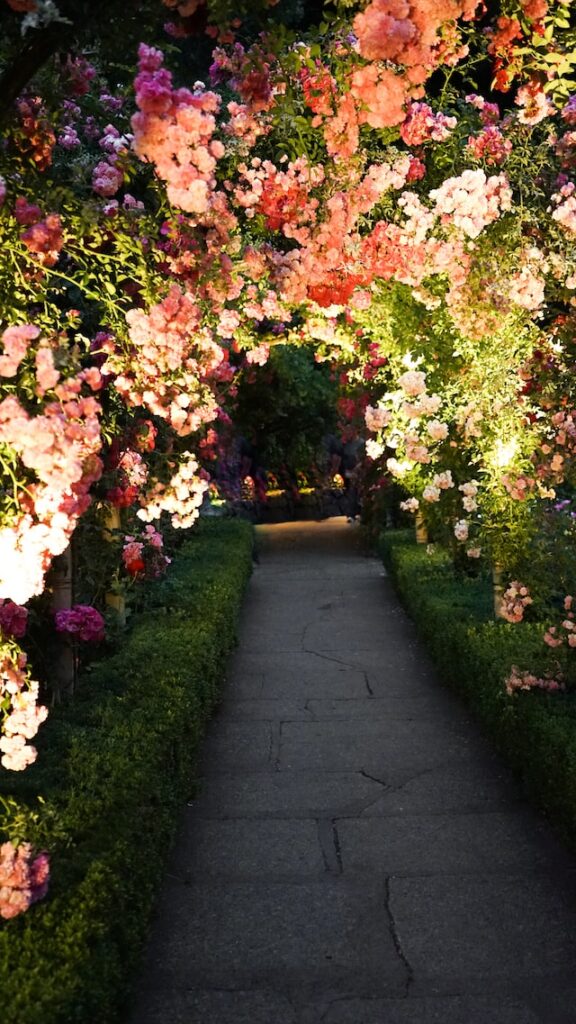PLACING A SHRUB
Besides supplying the framework for the garden, shrubs can screen unwanted sights, define property boundaries, provide a backdrop for flower gardens, guide the eye, and set the overall tone of a garden. When allowed to assume their natural habit, shrubs can make essential contributions to naturalistic and informal gardens. Carefully pruned or neatly sheared into idealized or geometric shapes, shrubs add interest to formal designs. Shrubs can also be massed for screening or retaining soil on slopes, combined with other plants in mixed borders, or planted as focal points or specimen plants.
Plant for color and texture, as well as form, in your design, and keep in mind the changing scene through the seasons. The choices will seem nearly infinite. Your decisions should be based more on the shrubs combinations with one another than with their relation to the perennials, annuals, vines, and bulbs. Because shrubs are such prominent and permanent fixtures, they deserve precedence over the smaller, more ephemeral plants. Certain foliage colors are particularly useful. Green adds weight and stability, while blue-green and gray tone down potentially clashing colors and are good foils for white, pink, purple, or blue. Yellow adds a splash of brightness to a dark corner, while maroon and purple almost vibrate next to acid green.
Shrubs are generally undemanding, provided you get them off to a good start and do not crowd them. Choose shrubs according to their expected height and spread, and give new ones room to grow; fill in the gaps around them with shade-tolerant annuals, such as impatiens and caladiums. It would be a waste of effort to place a wide-spreading shrub, such as a forsythia, in a tight space, where you would eventually need to hack it back and ruin its shape.
In selecting your shrubs, attend to their soil, moisture, and light requirements as well. Remember to account for the encroaching shade of growing trees, and select adaptable species to plant near them.
Pests and diseases usually cause the worst problems when a shrub is under stress. A susceptible shrub squeezed into an airless corner invites an infestation of whiteflies, which love hot, airless spots. A rose in a damp, shady place is much more susceptible to mildew and blackspot than a rose in sun. Rather than struggle with sprays and powders, select disease-resistant varieties, plant them where they grow best, and tend them well.
Once you have chosen the right plant for the right spot, examine the plant carefully before you buy. Like trees, shrubs are sold balled-and-burlapped, bare-root, or in containers. The sidebar below explains what to look for in selecting a container plant. For consumer guidance on root systems in general.







